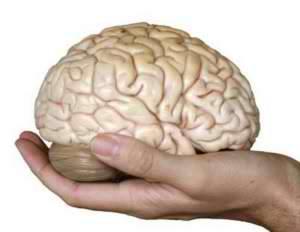Volkow, Koob, and McLellan on the neurobiology of addiction.

The New England Journal of Medicine recently published a review article, “Neurobiologic Advances from the Brain Disease Model of Addiction,” authored by three prominent figures in the field of addiction research: Nora Volkow, the director of the National Institute of Drug Abuse (NIDA); George Koob, the director of the National Institute of Alcohol Abuse and Alcoholism (NIAAA); and Thomas McLellan, founder and chairman of the Treatment Research Institute in Philadelphia. The article summarizes the research that has “increasingly supported the view that addiction is a disease of the brain,” and concludes that “neuroscience continues to support the brain disease model of addiction.”
The implications of this, say the authors, are straightforward: “As is the case in other medical conditions in which voluntary, unhealthful behaviors contribute to disease progression (e.g., heart disease, diabetes, chronic pain, and lung cancer), evidence-based interventions aimed at prevention, along with appropriate health policies, are the most effective ways of changing outcomes.”
And some of the implications are immediate: “A more comprehensive understanding of the brain disease model of addiction many help to moderate some of the moral judgment attached to addictive behaviors and foster more scientific and public health-oriented approaches to prevention and treatment.”
In a supplementary appendix, the authors address some of the common criticisms of the disease model of addiction, and offer counter-arguments. The quotes below are excerpted directly from the appendix.
—Most people with addiction recover without treatment, which is hard to reconcile with the concept of addiction as a chronic disease.
This reflects the fact that the severity of addiction varies, which is clinically significant for it will determine the type and intensity of the intervention. Individuals with a mild to moderate substance use disorder, which corresponds to the majority of cases, might benefit from a brief intervention or recover without treatment whereas most individuals with a severe disorder will require specialized treatment
—Addicted individuals respond to small financial rewards or incentives (contingency management), which is hard to reconcile with the notion that there is loss of control in addiction.
The demonstrated effectiveness of contingency management shows that financial cues and incentives can compete with drug cues and incentives – especially when those financial incentives are significant and relatively immediate; and when control has been simply eroded rather than lost. Contingency management is increasingly being utilized in the management of other medical disorders to incentivize behavioral changes (i.e., compliance with medications, diets, physical activity).
—Gene alleles associated with addiction only weakly predict risk for addiction, which is hard to reconcile with the importance of genetic vulnerabilities in the Brain Disease Model of Addiction.
This phenomenon is typical of complex medical diseases with high heritability rates for which risk alleles predict only a very small percentage of variance in contrast to a much greater influence of environmental factors (i.e., cirrhosis, diabetes, asthma, cardiovascular disease). This reflects, among other things, that the risk alleles mediate the response to the environment; in the case of addiction, the exposures to drugs and stressful environments.
Overlaps in brain abnormalities between people with addiction and control groups raises questions on the role that brain abnormalities have on addiction.
The overlap is likely to reflect the limitation of currently available brain imaging techniques (spatial and temporal resolutions, chemical sensitivity), our limited understanding of how the human brain works, the complexity of the neurobiological changes triggered by drugs and the heterogeneity of substance use disorders.
Treatment benefits associated with the Brain Disease Model of Addiction have not materialized.
Medications are among the most effective interventions for substance use disorders for which they are available (nicotine, alcohol and opiates). Moreover, progress in the approval of new medications for substance use disorders has been slowed by the reluctance of pharmaceutical companies to invest in drug development for addiction.
Benefits to policy have been minimal.
The Brain Disease Model of Addiction provided the basis for patients to be able to receive treatment for their addiction and for insurances to cover for it. This is a monumental advance in health policy. The Brain Disease Model of Addiction also provides key evidence-based science for retaining the drinking age at 21 years.

